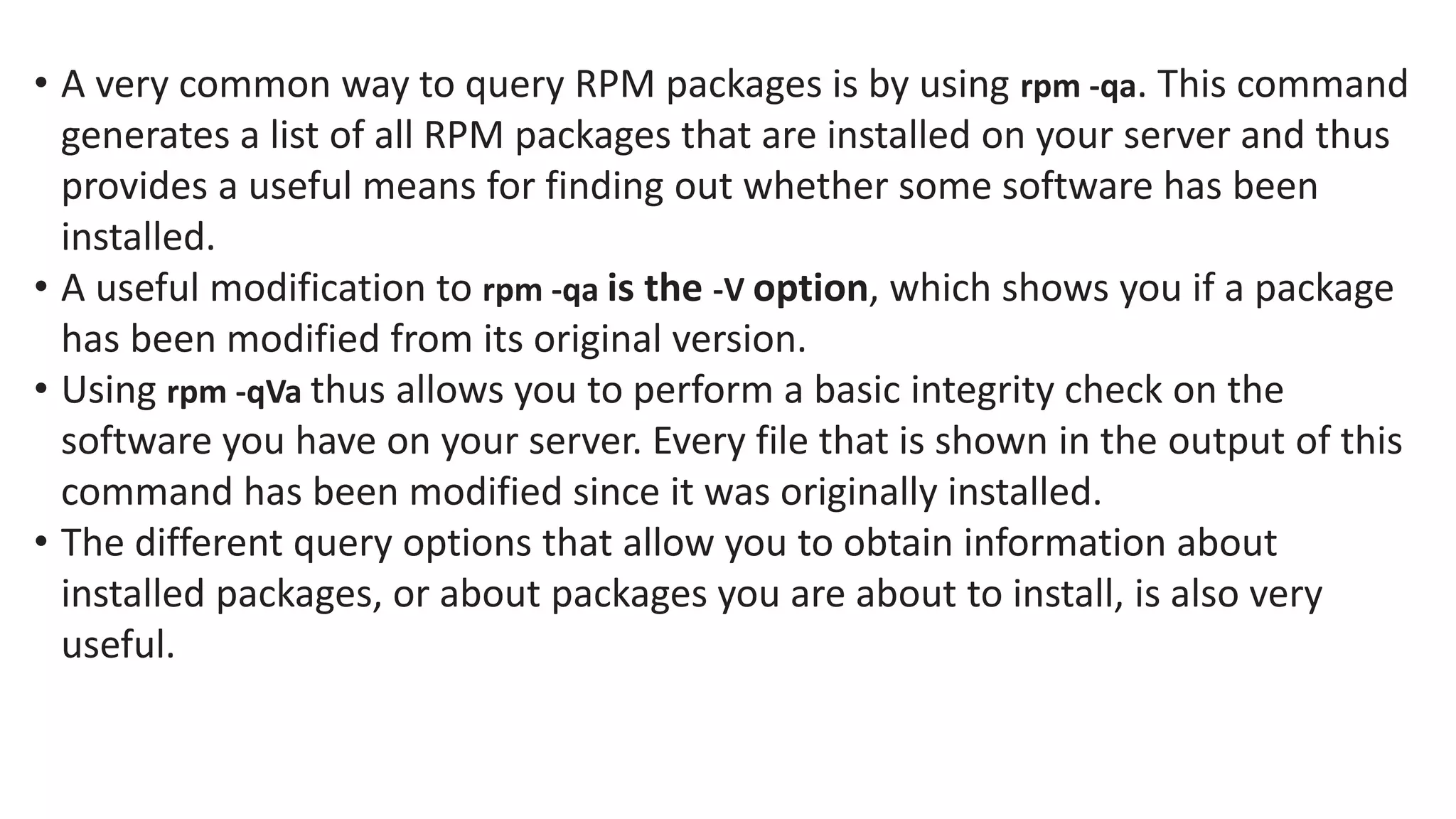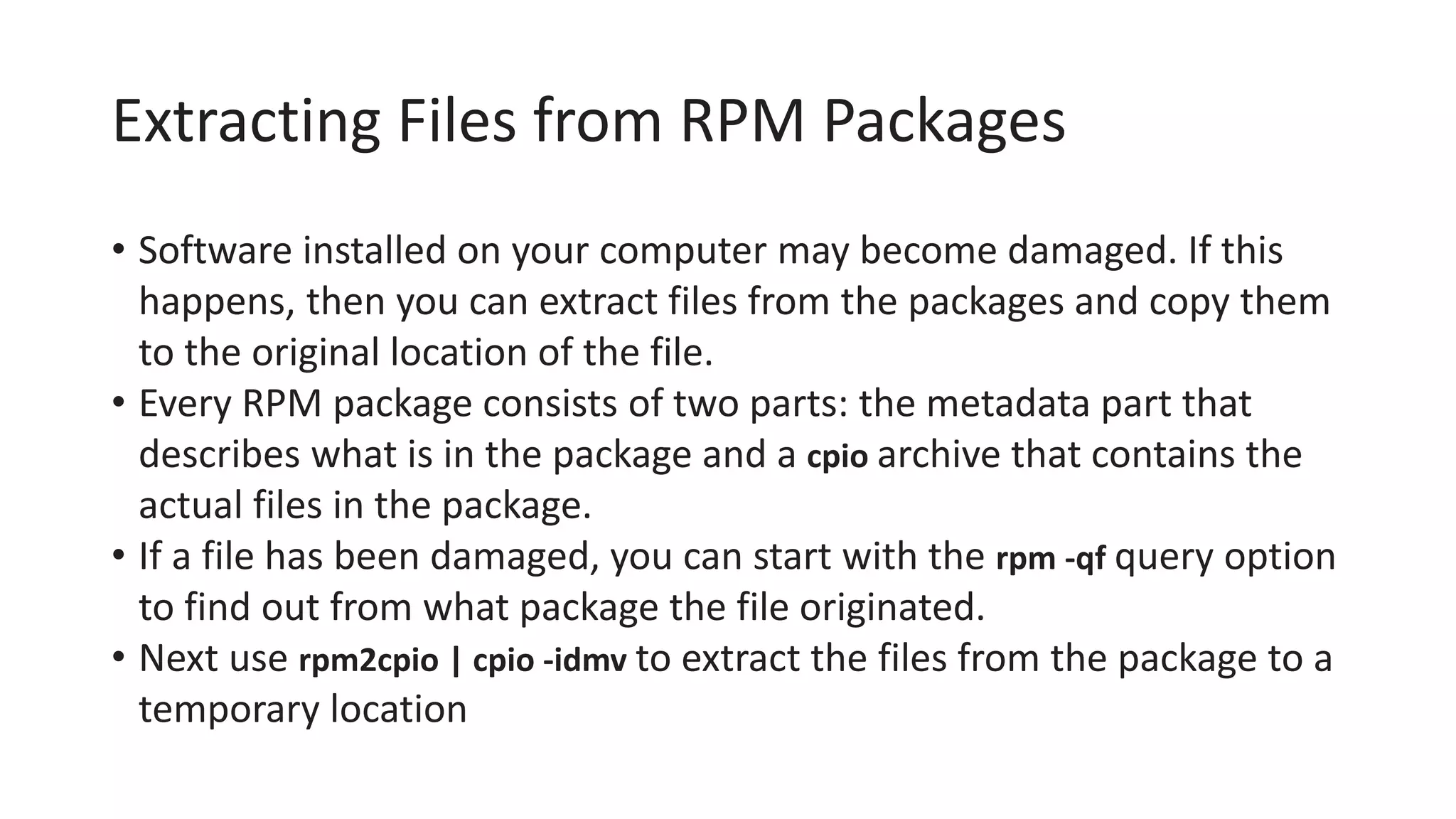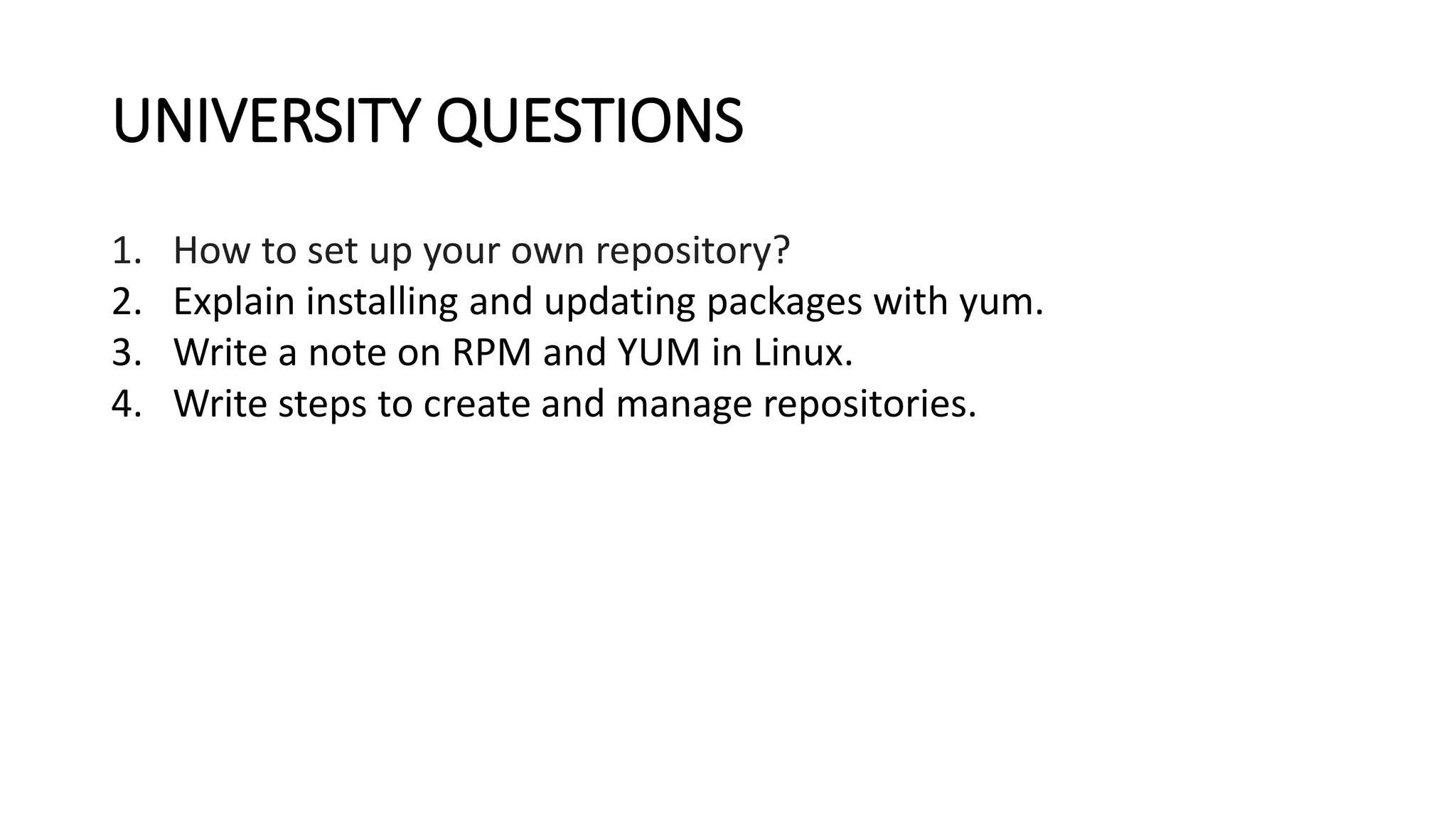The document describes Linux system administration focusing on managing software using the Red Hat Package Manager (RPM) and Yellowdog Update Manager (YUM). It explains the advantages of RPM over older methods like tar balls, including better tracking of installations and handling of software dependencies. It also covers creating and managing repositories, searching, installing, updating, and removing software packages with YUM, along with querying installed packages and troubleshooting.
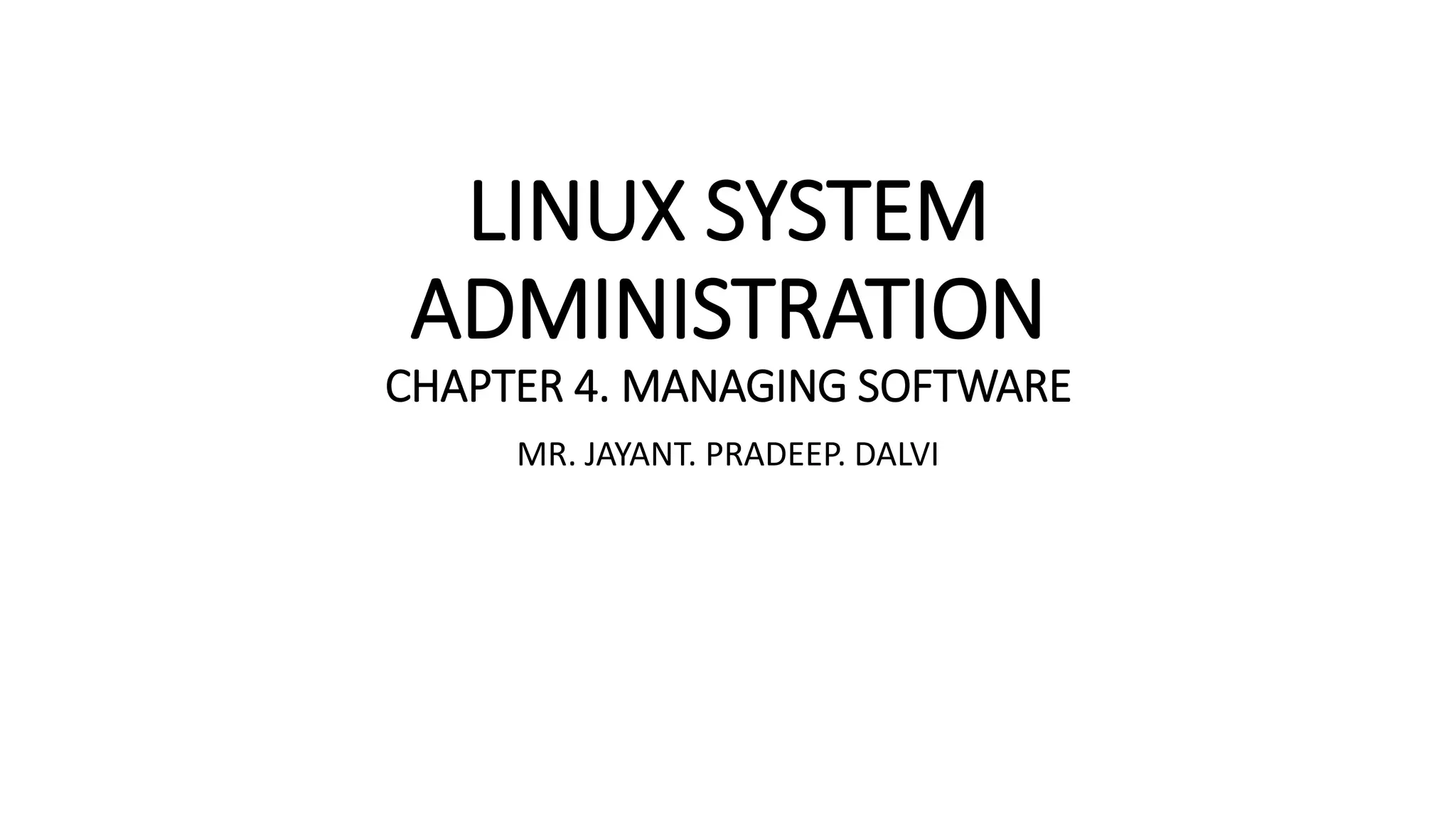
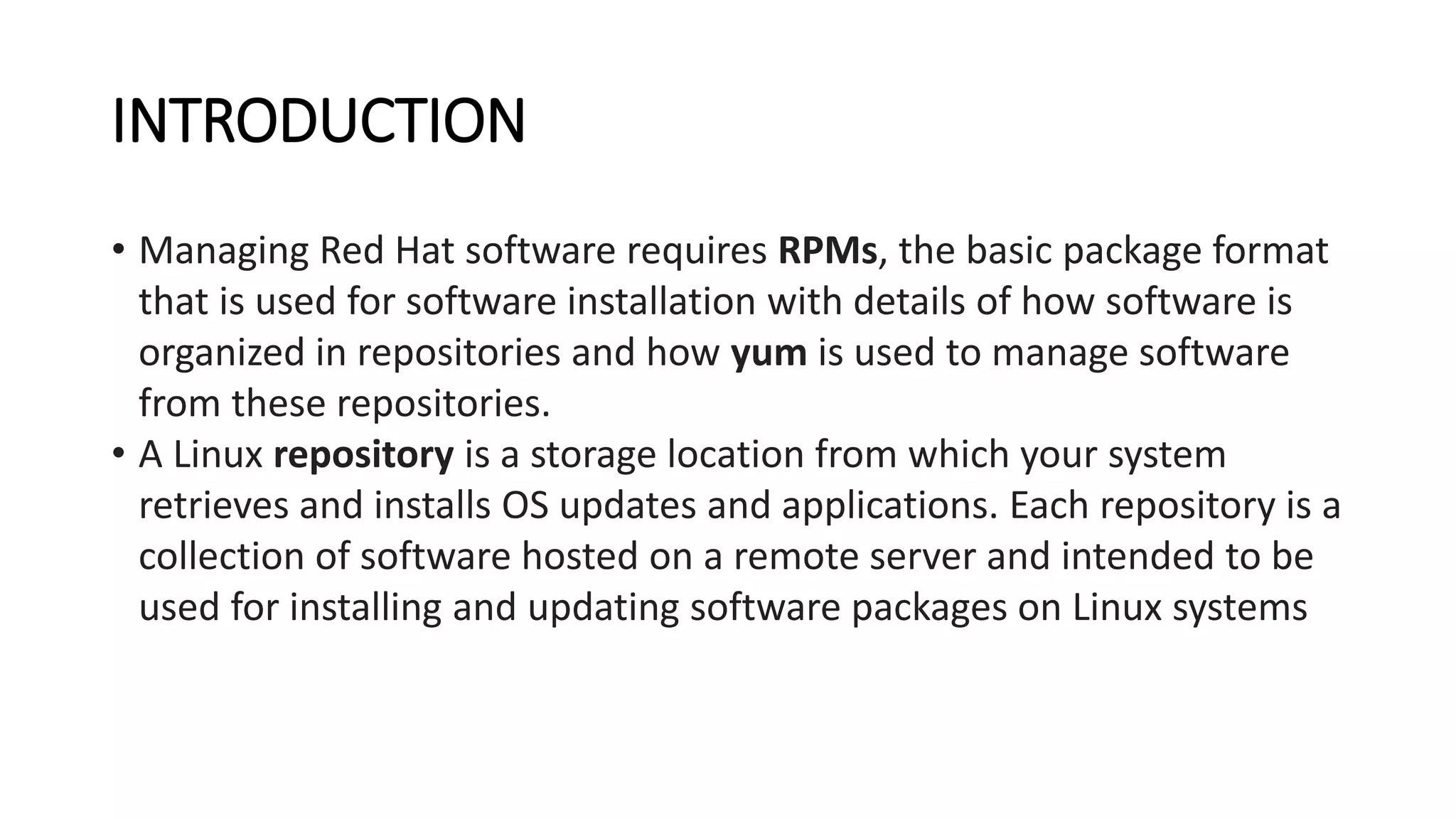
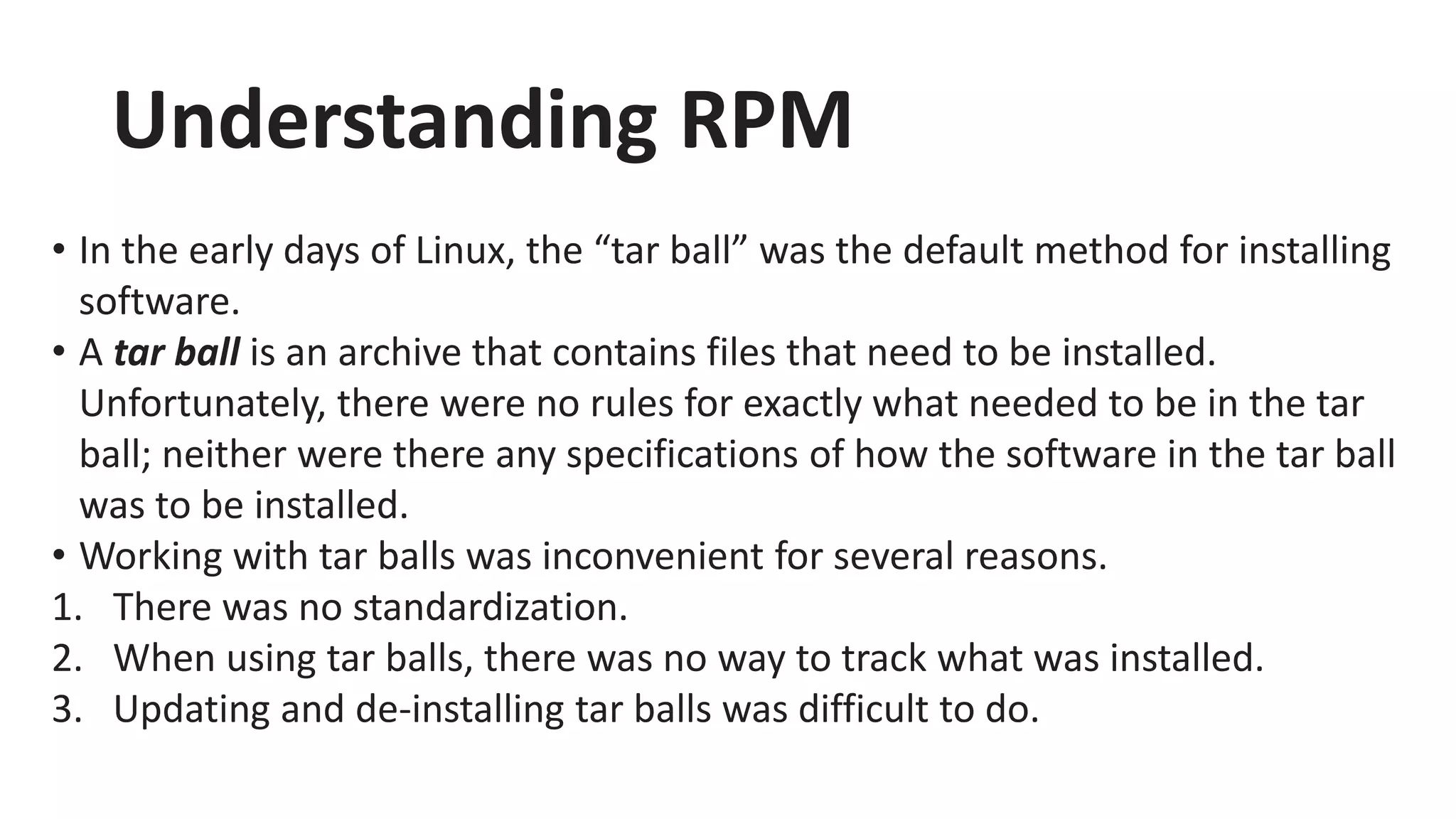
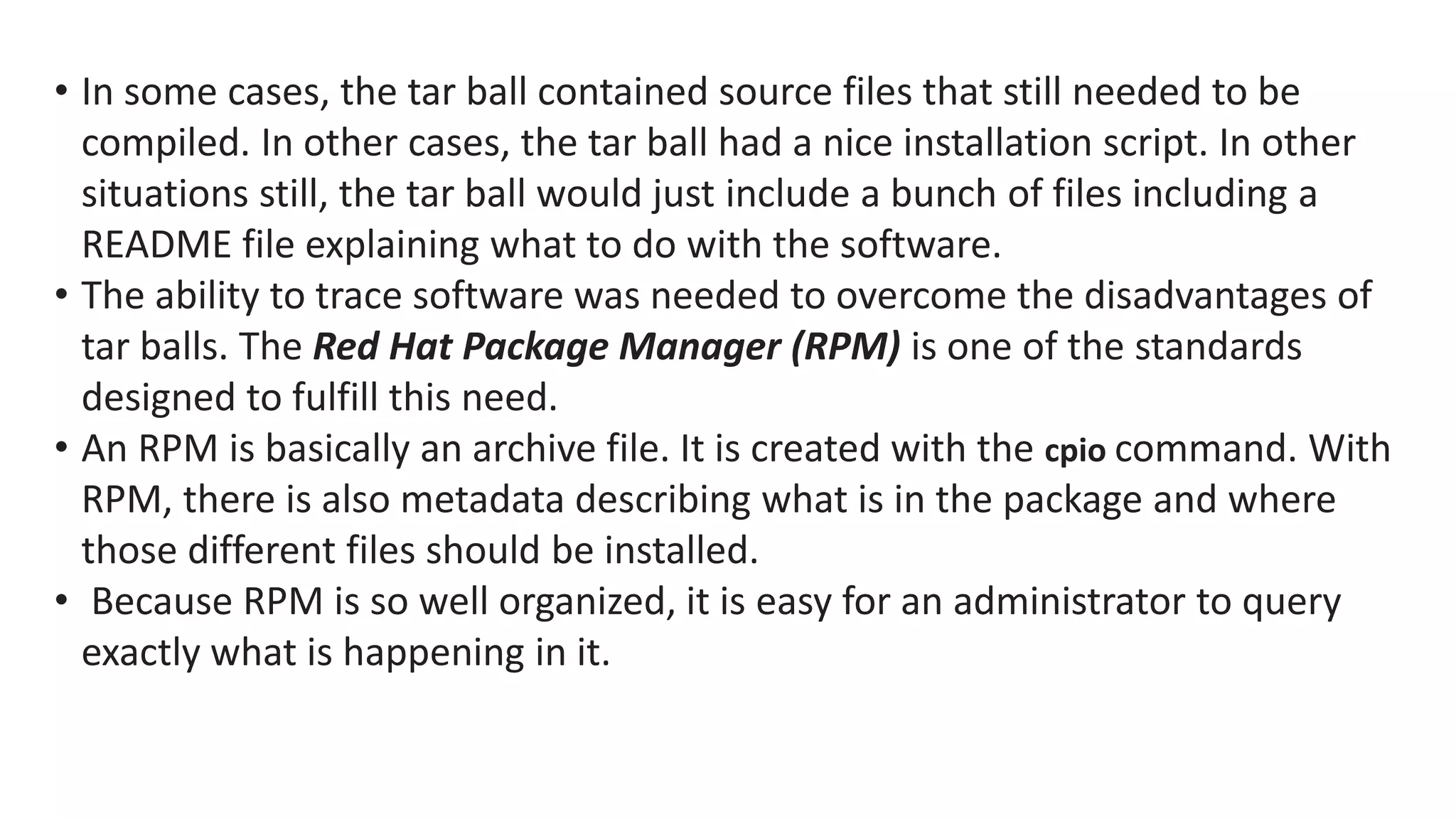

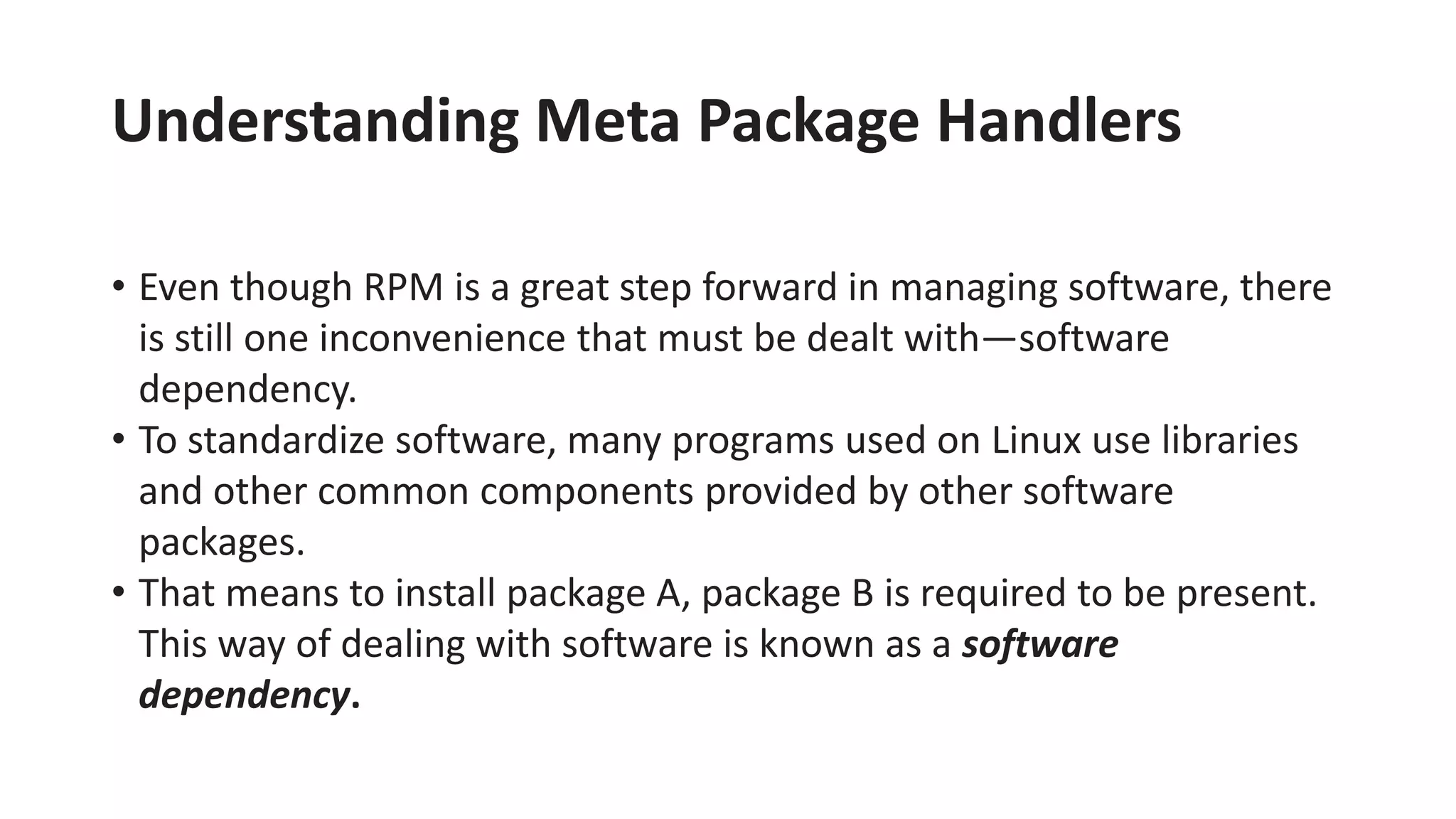
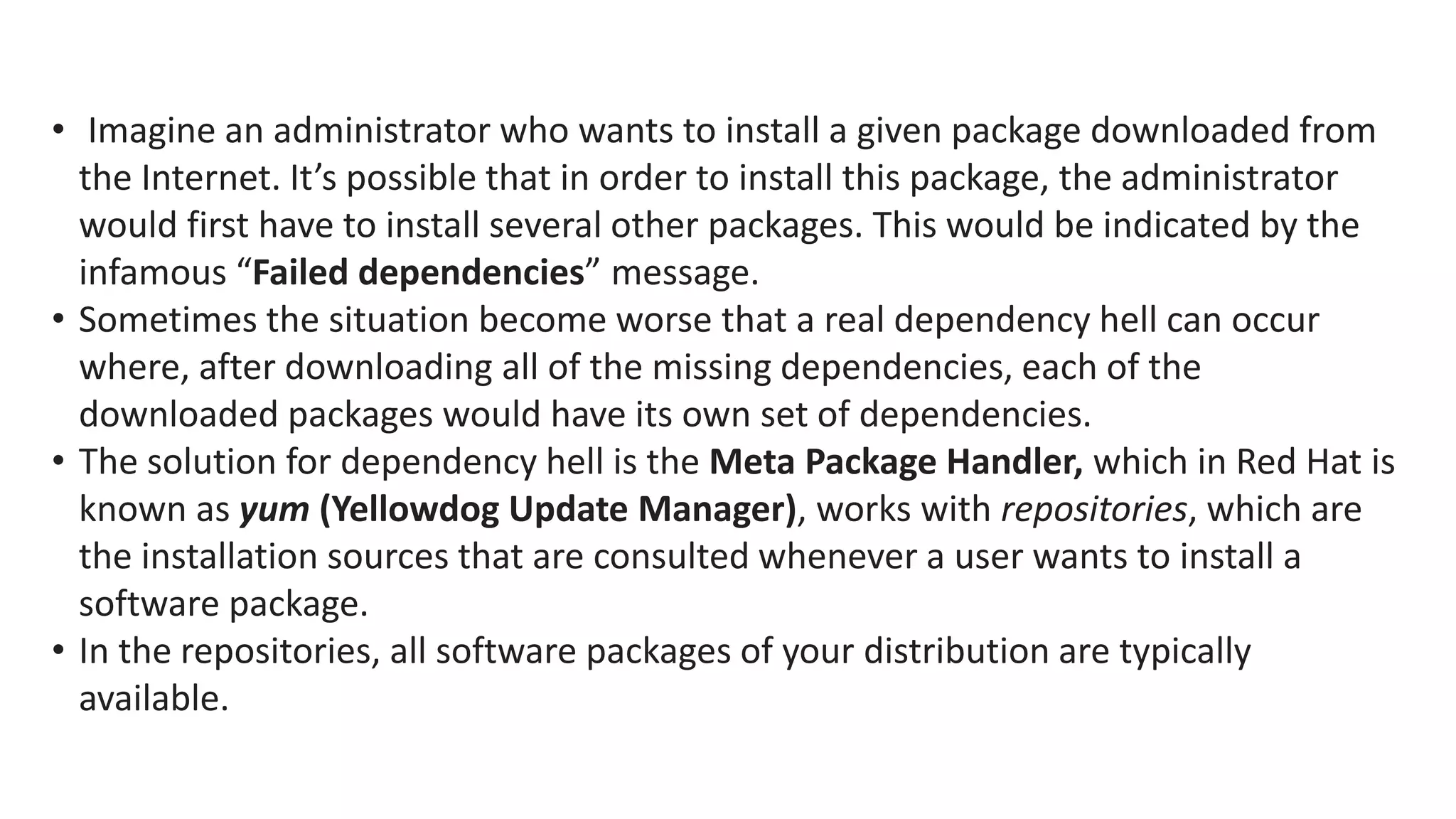
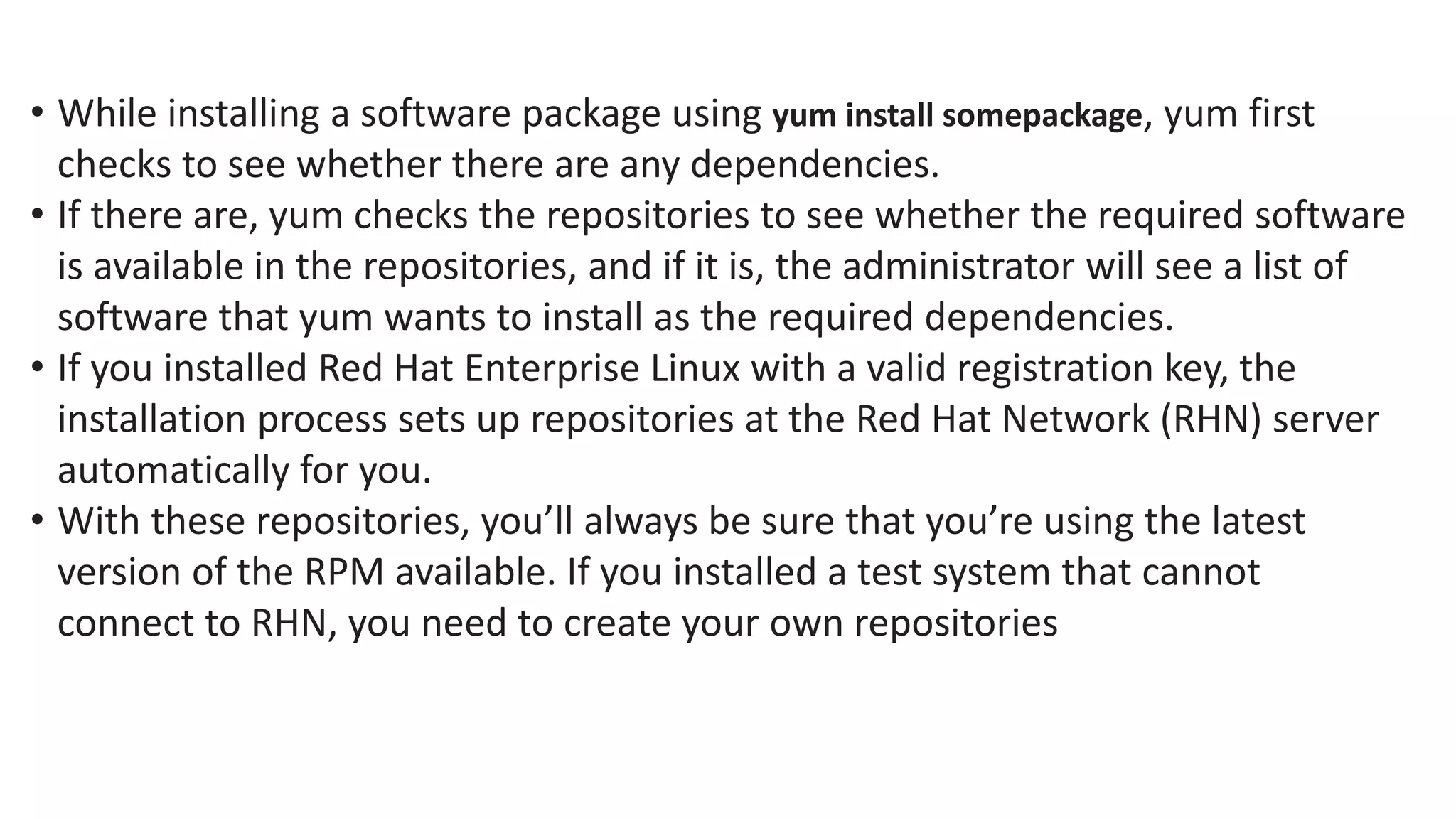
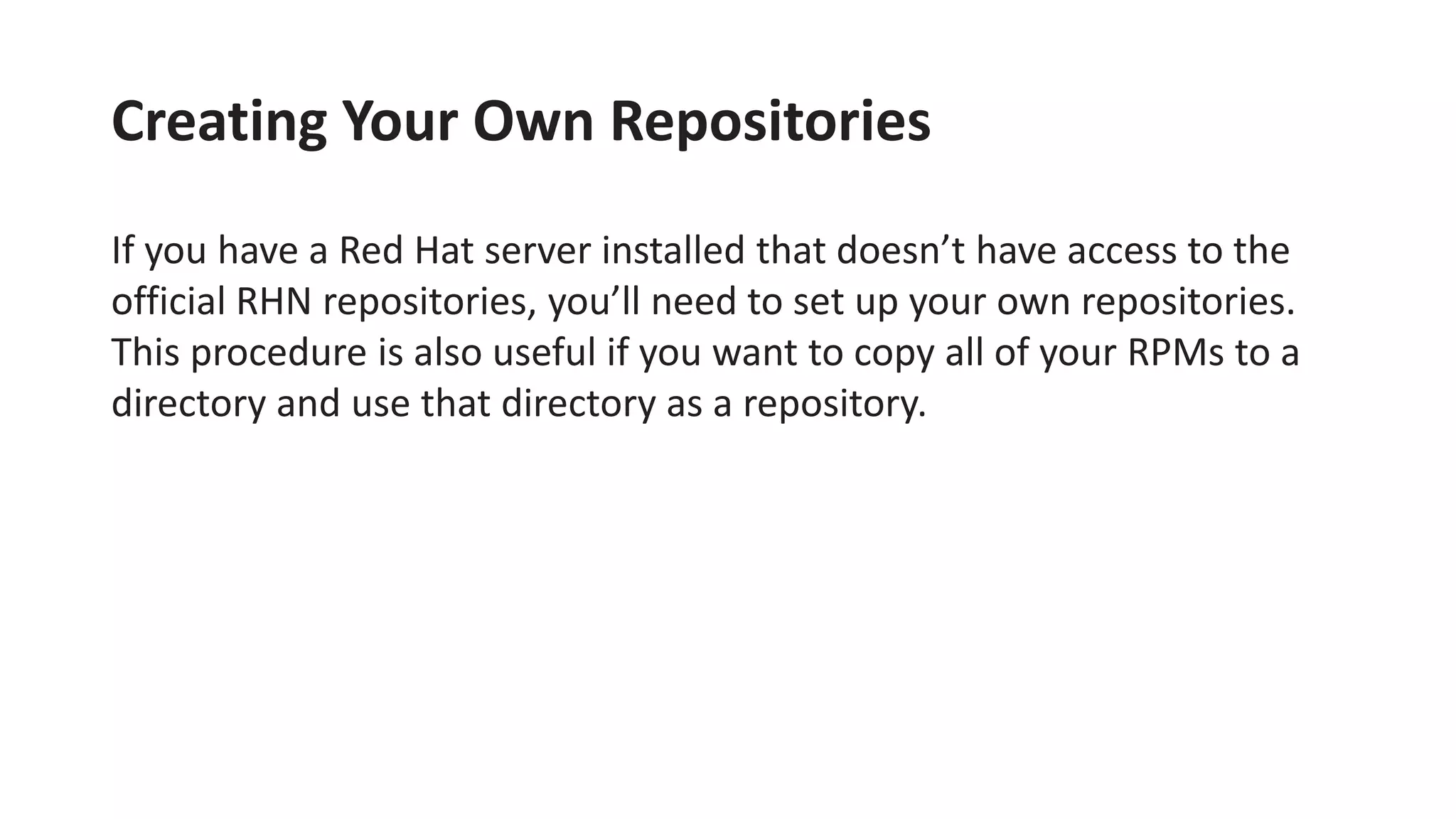
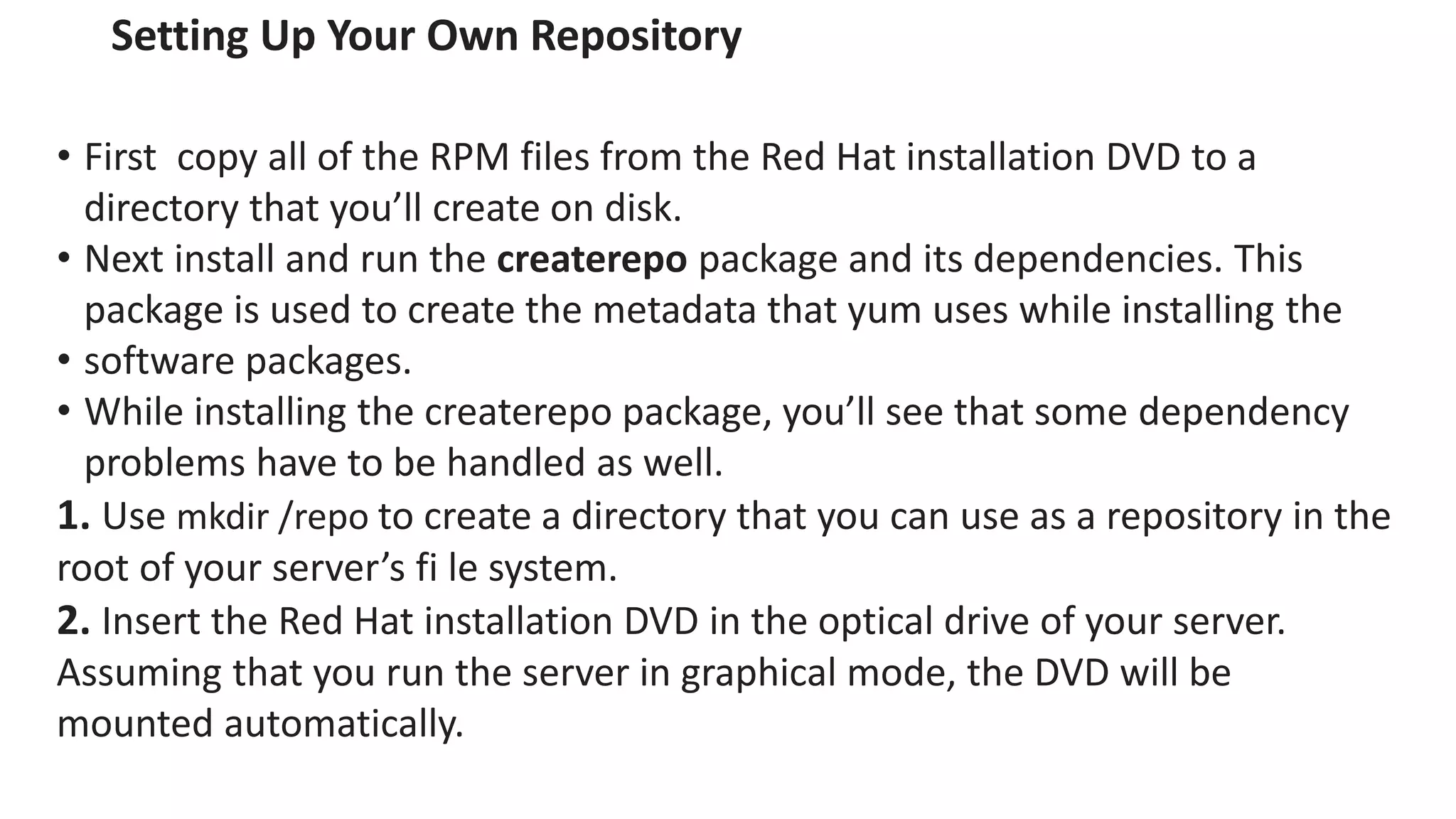
![3. Use the cd /media/RHEL[Tab] command to go into the mounted DVD. Next use cd
Packages, which brings you to the directory where all RPMs are by default. Now use
cp * /repo to copy all of them to the /repo directory you just created. Once this is
finished, you don’t need the DVD anymore.
4. Now use cd /repo to go to the /repo directory. From this directory, type rpm -ivh
createrepo[Tab]. This doesn’t work, and it gives you a “ Failed dependencies” error.
To install createrepo, you first need to install the deltarpm and python-deltarpm
packages. Use rpm -ivh deltarpm[Tab] python-deltarpm[Tab] to install both of
them. Next, use rpm -ivh createrepo[Tab] again to install the createrepo package.
5. Once the createrepo package has been installed, use createrepo /repo, which
creates the metadata that allows you to use the /repo directory as a repository.
This will take a few minutes. When this procedure is finished, your repository is ready
for use.](https://image.slidesharecdn.com/lsachapter4-201206153430/75/Linux-System-Administration-11-2048.jpg)
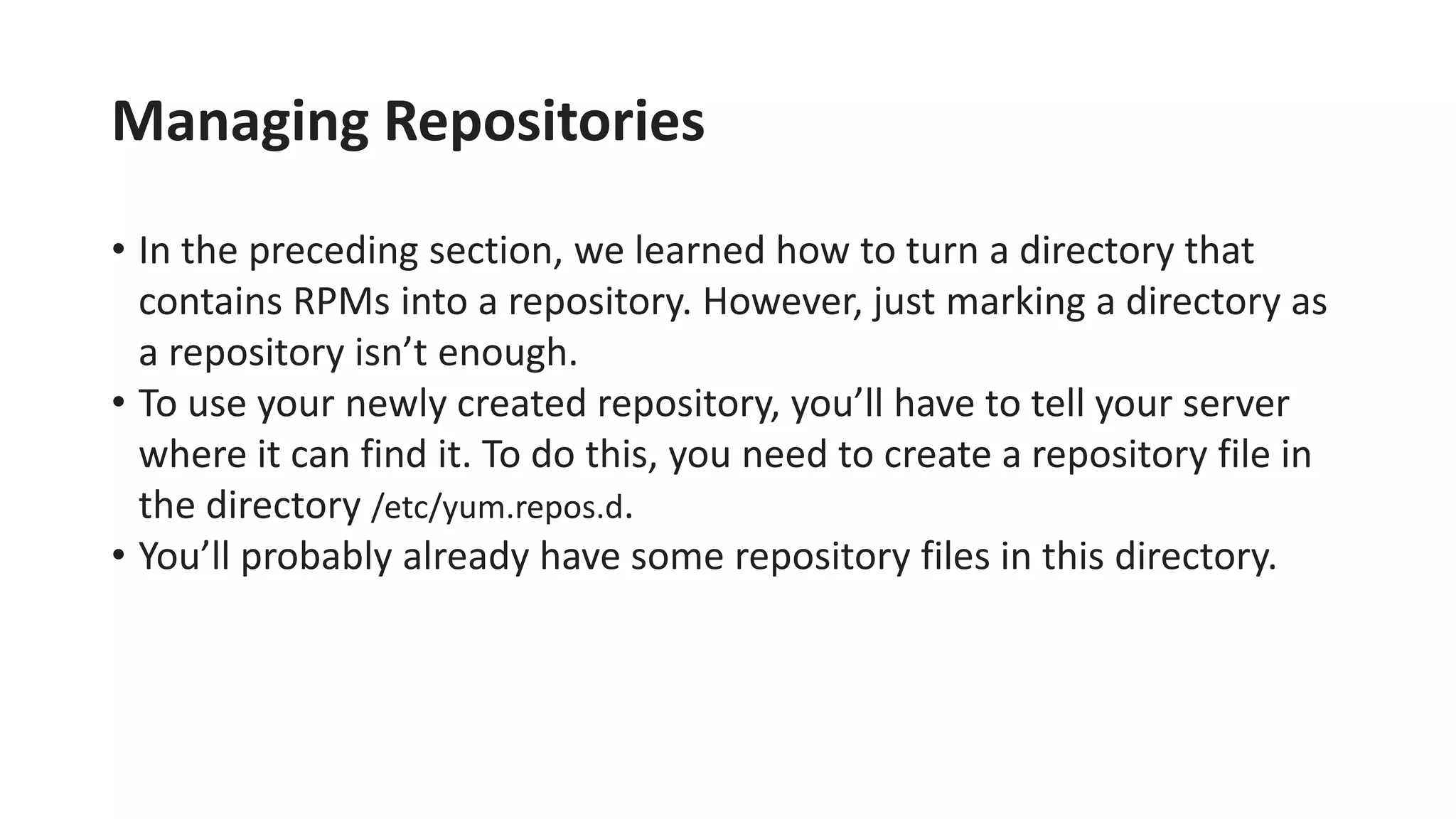
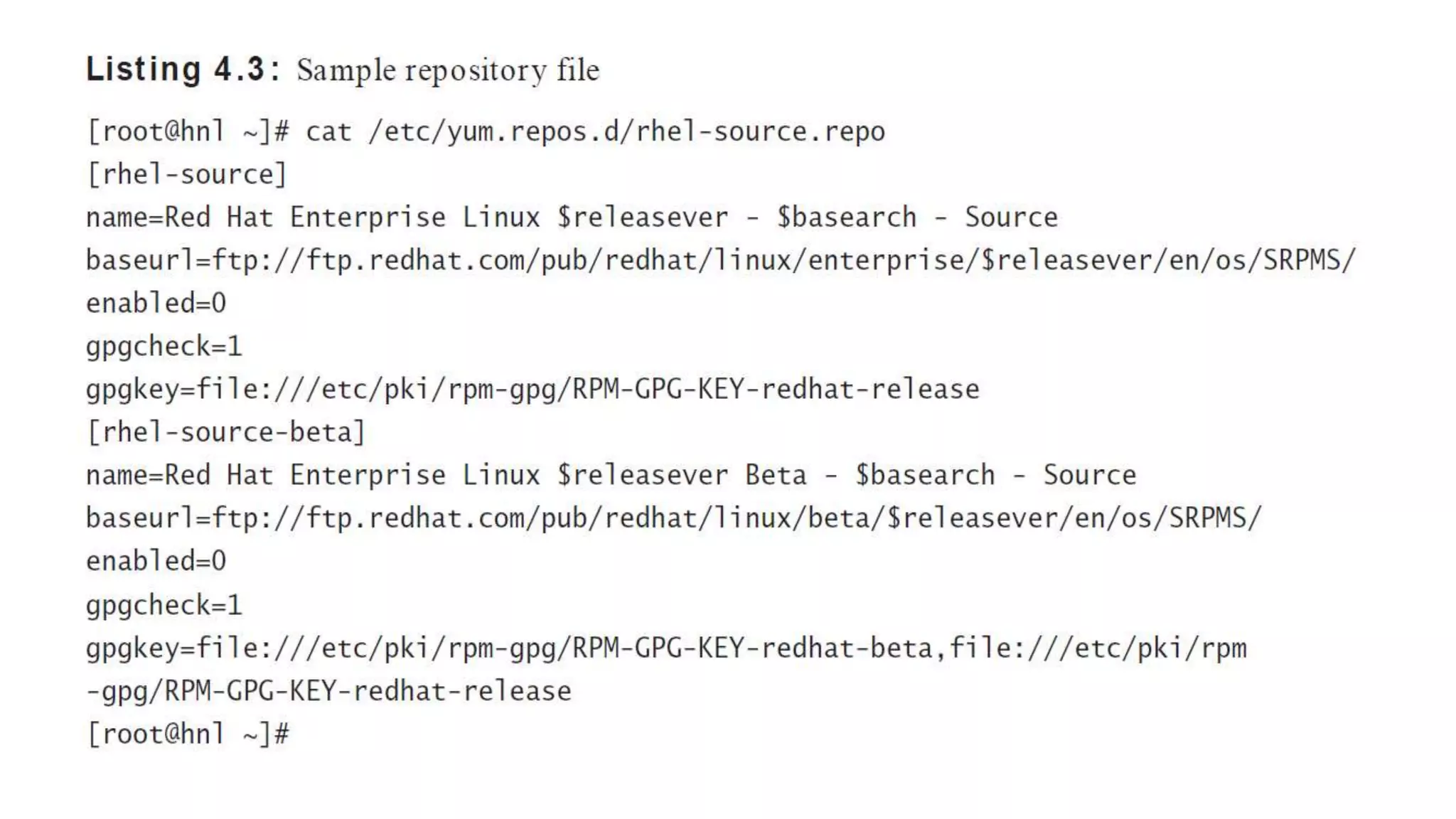
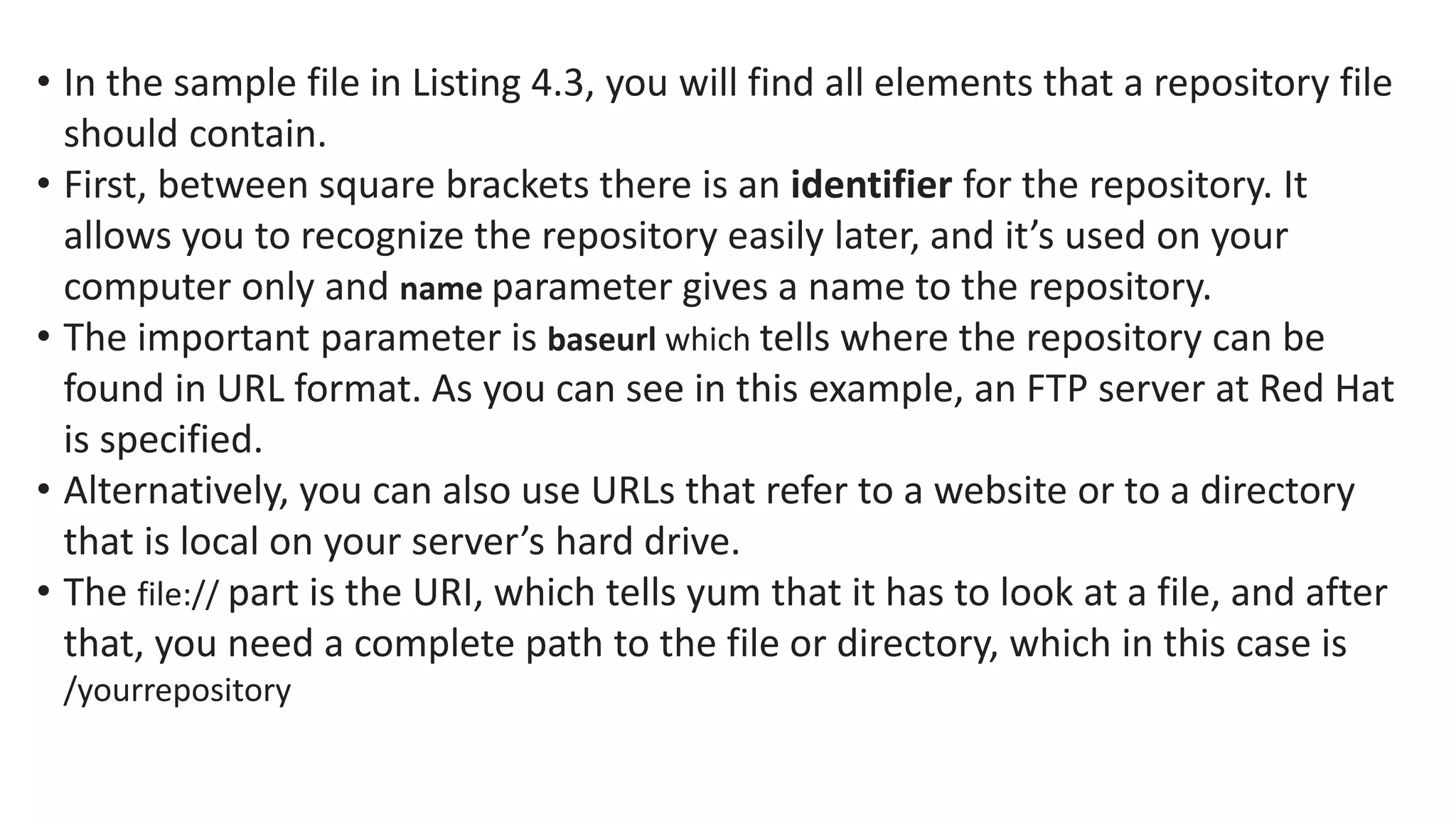
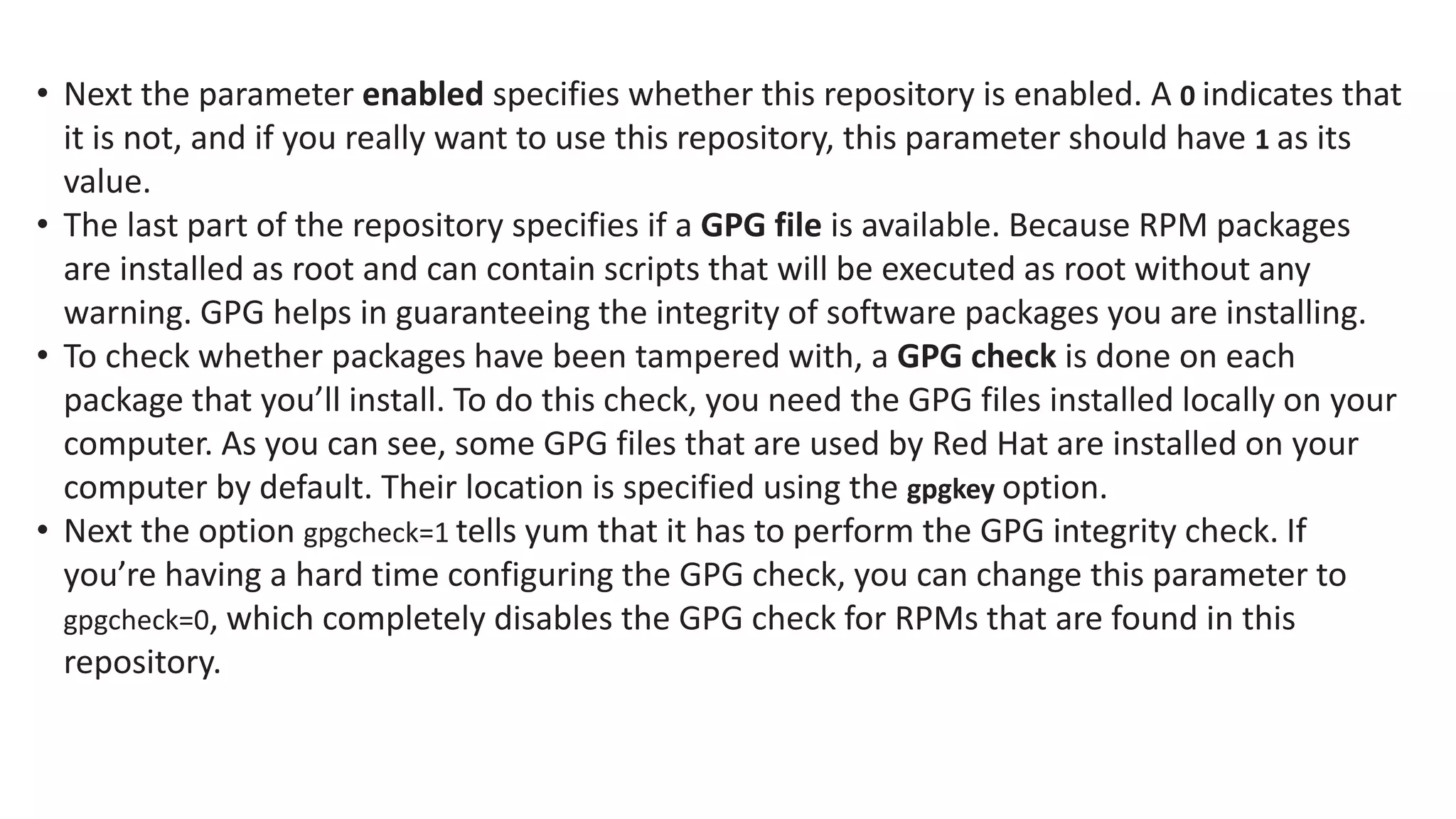
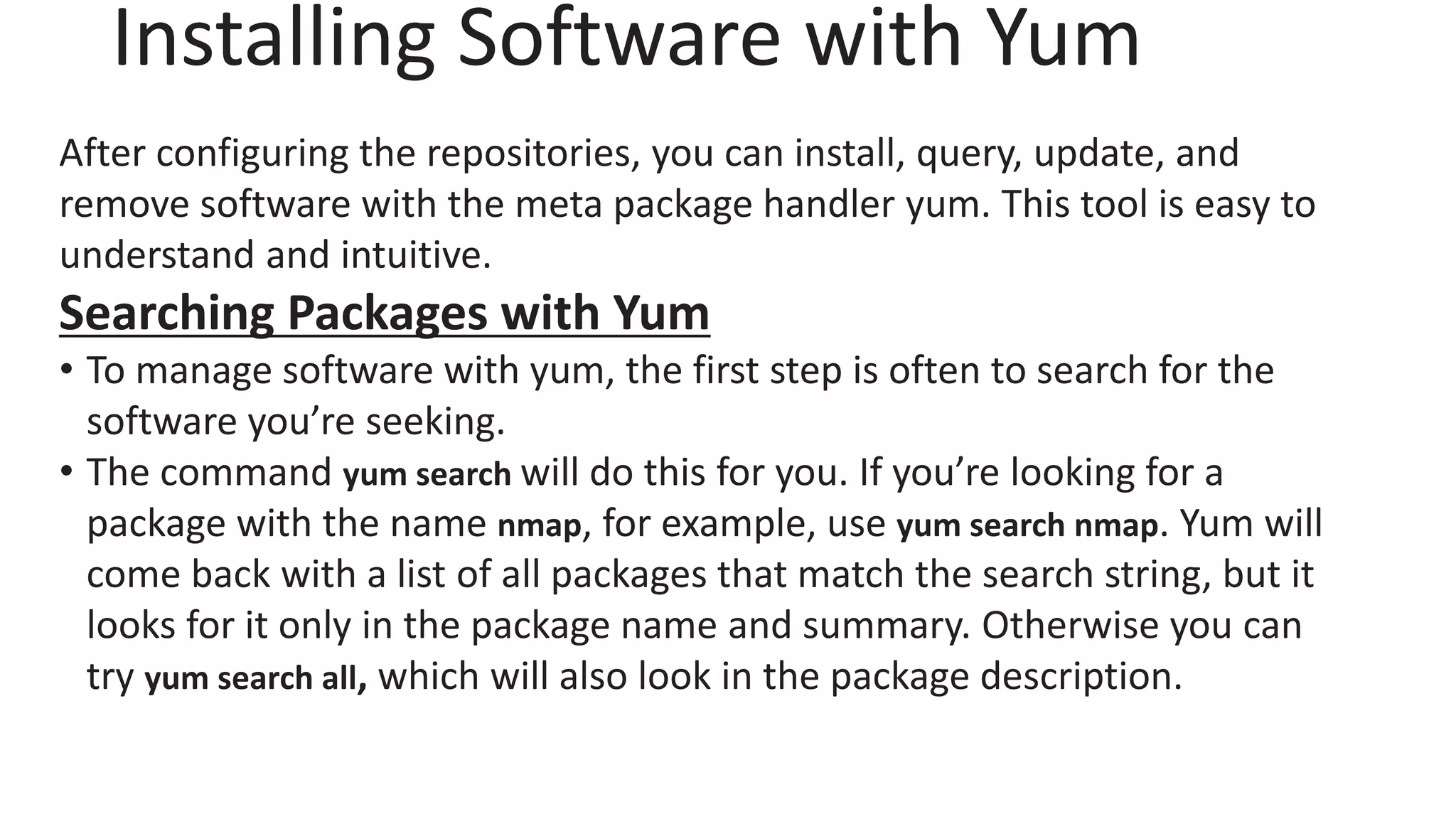

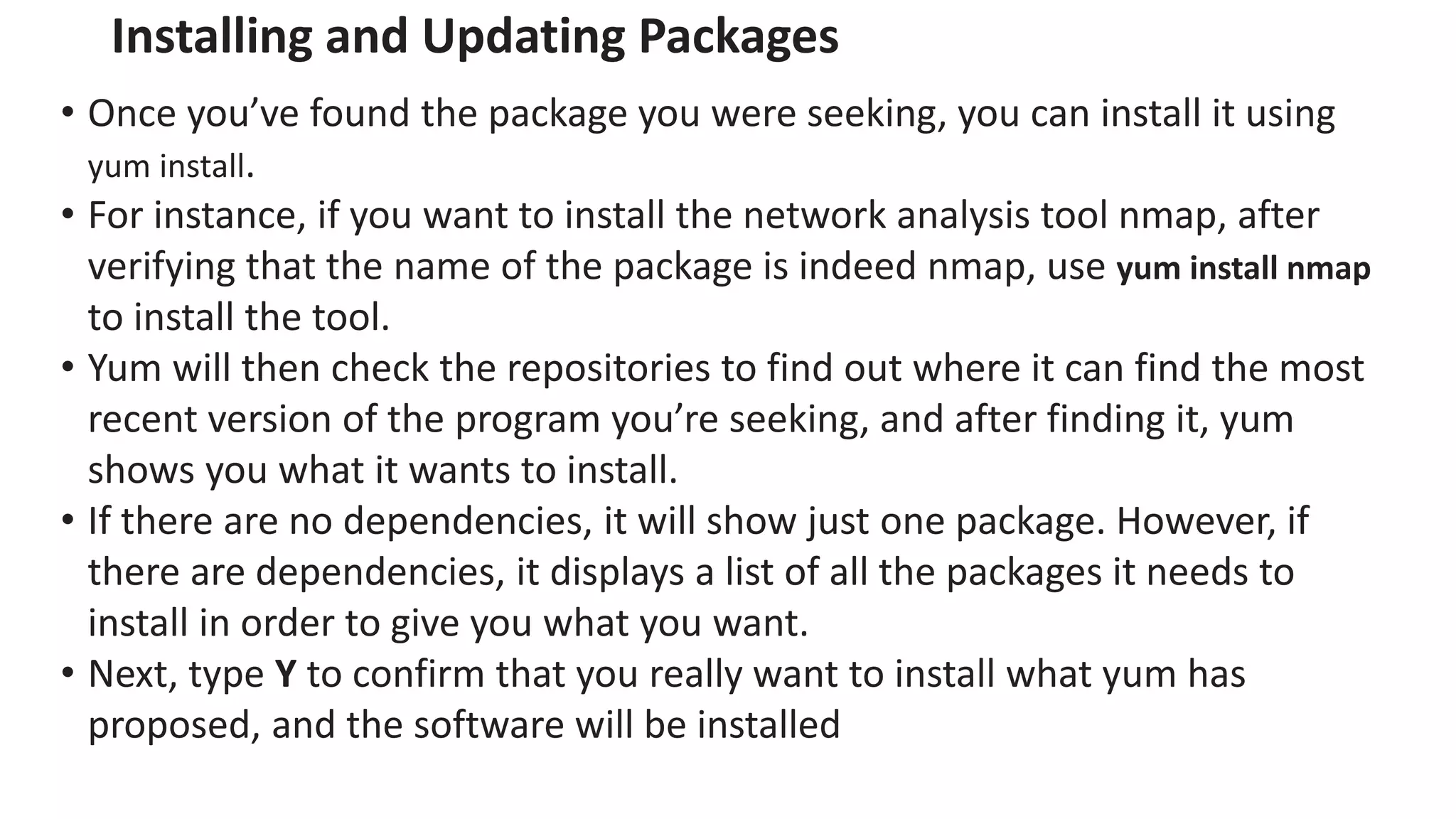
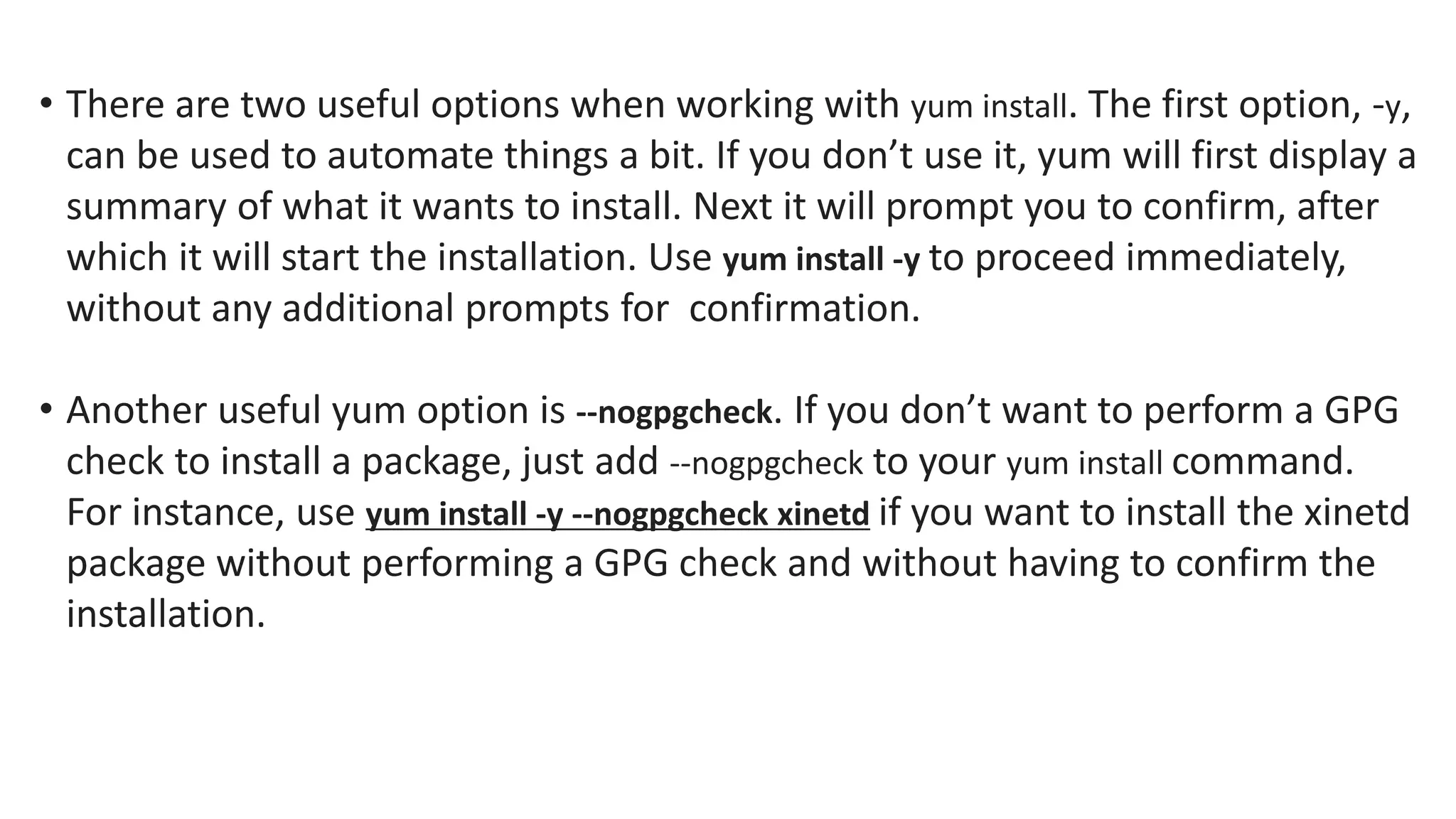
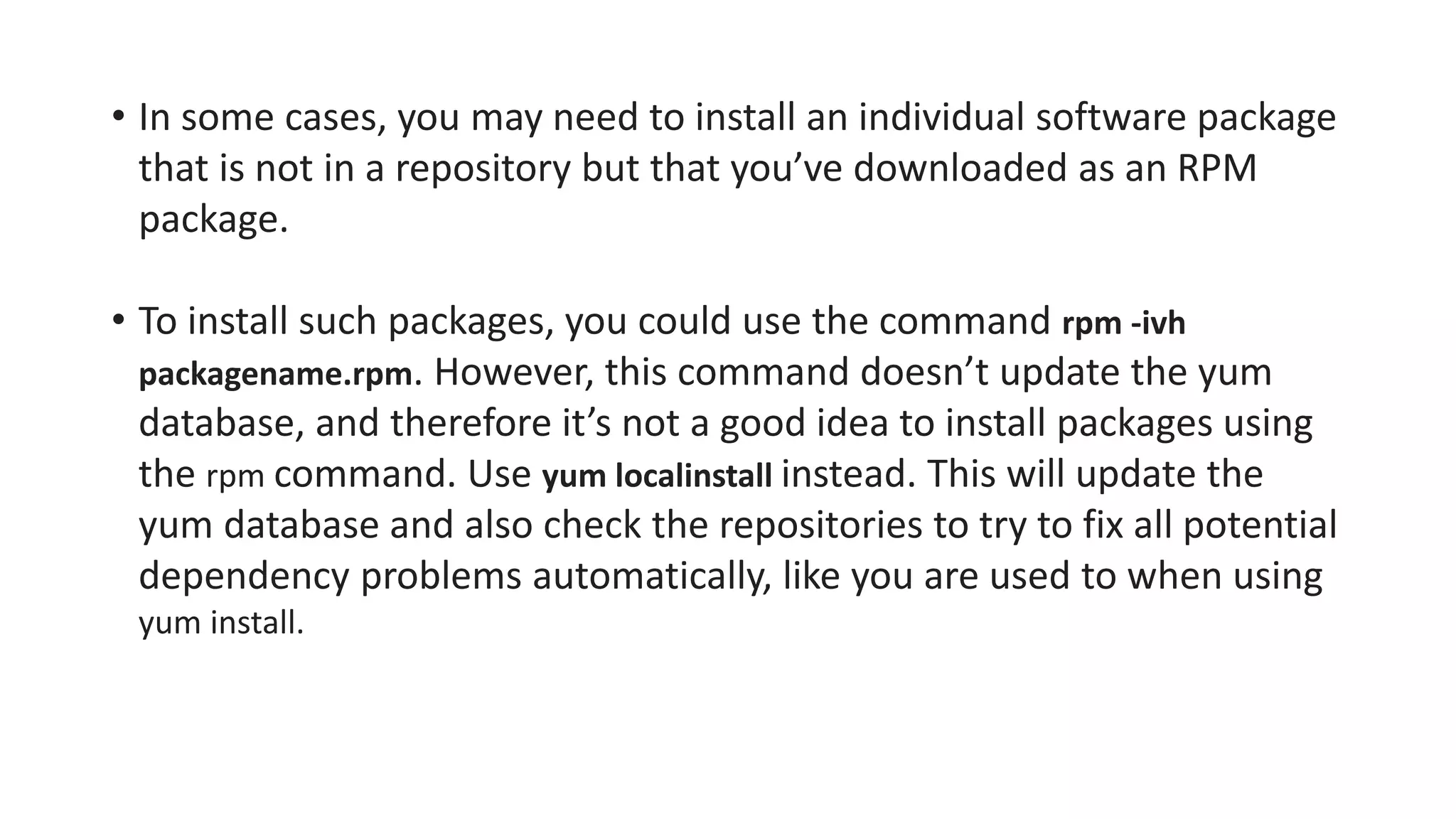

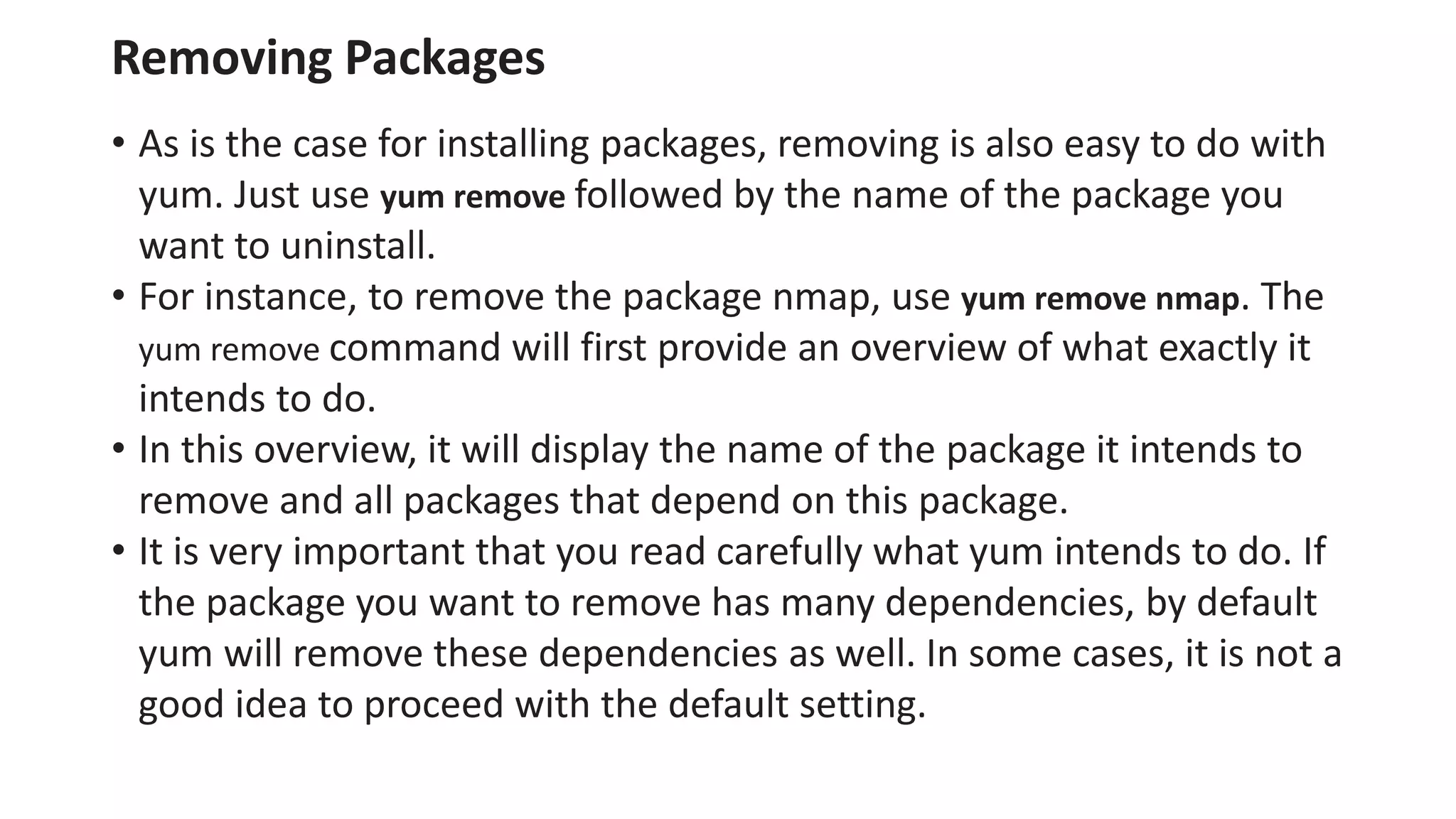
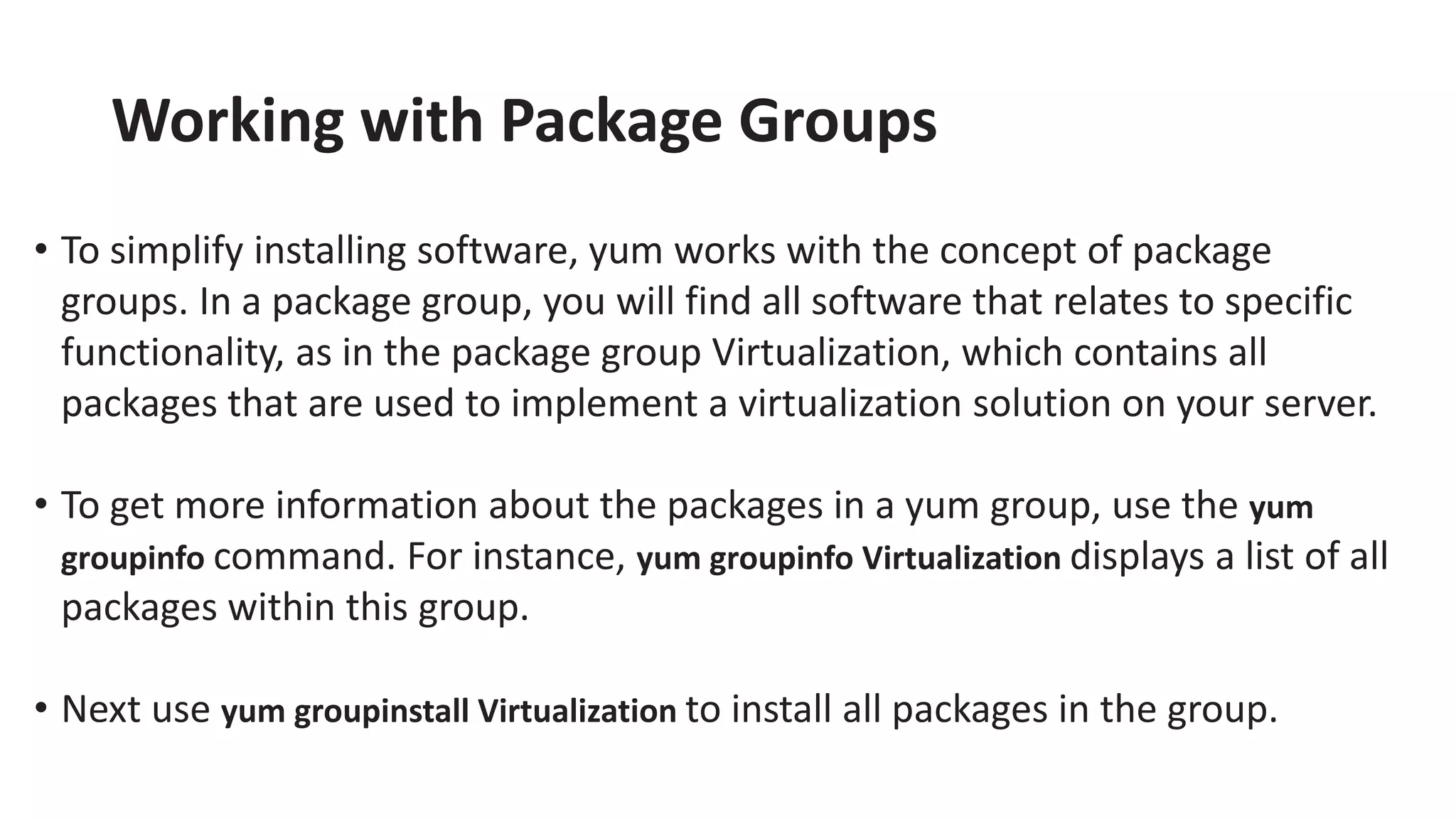
![Command and its Use:
1. yum search: Search for a package based on its name or a word in the package
summary.
2. yum provides */filename: Search in yum packages to find the package that contains a
filename.
3. yum install: Install packages from the repositories.
4. yum update [packagename]: Update all packages on your server or a specific one, if
you include a package name.
5. yum localinstall: Install a package that is not in the repositories but available as an RPM
file.
6. yum remove: Remove a package.
7. yum list installed: Provide a list of all packages that are installed. This is useful in
combination with grep or to check whether a specific package has been installed.
8. yum grouplist: Provide a list of all yum package groups.
9. yum groupinstall: Install all packages in a package group.](https://image.slidesharecdn.com/lsachapter4-201206153430/75/Linux-System-Administration-24-2048.jpg)

